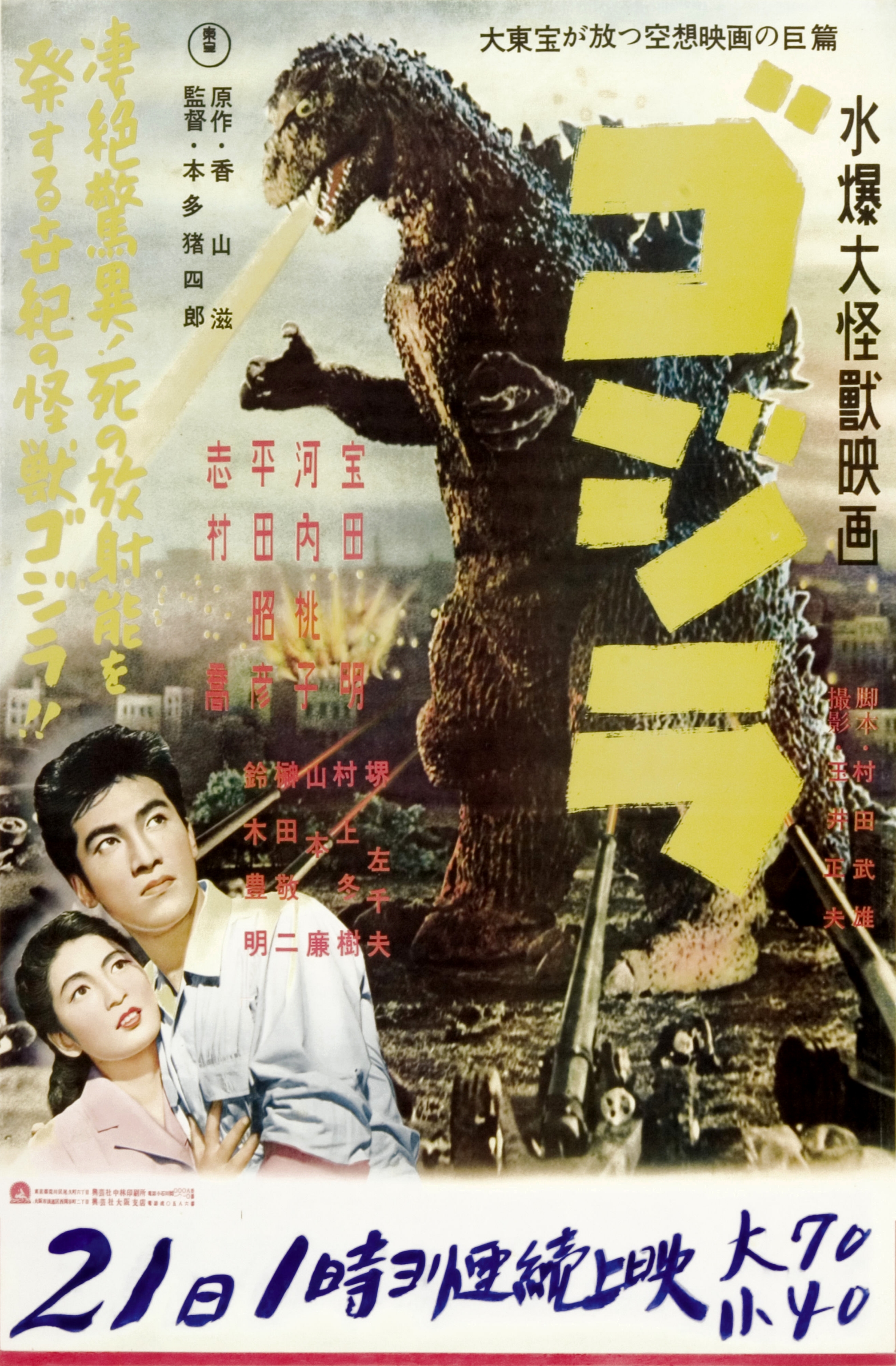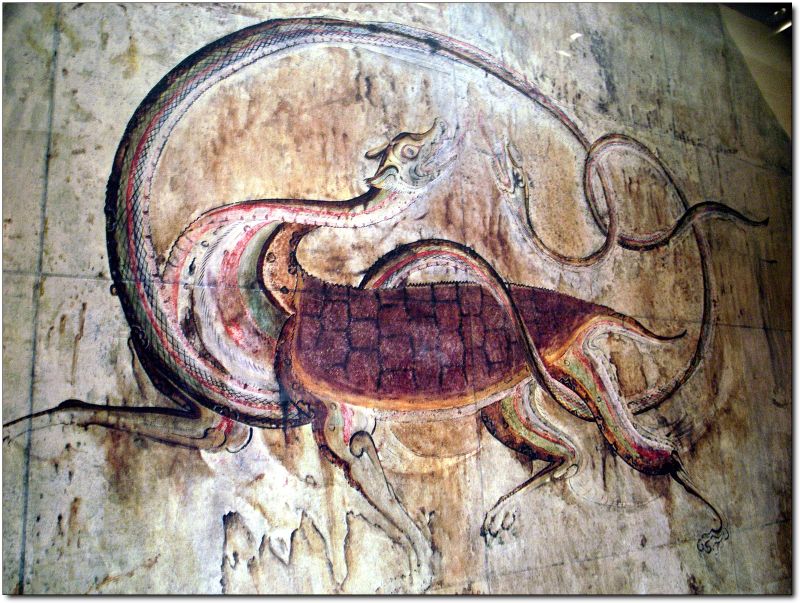|
Mecha-Streisand
"Mecha-Streisand" is the twelfth and penultimate episode of the South Park season 1, first season of the American animated television series ''South Park''. It originally aired on Comedy Central in the United States on February 18, 1998. In the episode, Barbra Streisand obtains the Diamond of Pantheos from Stan Marsh, Stan, Eric Cartman, Cartman, Kyle Broflovski, Kyle and Kenny McCormick, Kenny, and transforms into a giant mechanical dinosaur called Mecha-Streisand. She is ultimately defeated by The Cure frontman Robert Smith (musician), Robert Smith, who himself transforms into a giant moth monster. The episode was written by series co-creators Trey Parker and Matt Stone along with writer Philip Stark, and was directed by Parker. "Mecha-Streisand" parodies numerous popular Kaiju films and features portrayals of actor Sidney Poitier and film critic Leonard Maltin. According to Nielsen ratings, "Mecha-Streisand" was watched by 5.4 million viewers, a record high viewership for a ' ... [...More Info...] [...Related Items...] OR: [Wikipedia] [Google] [Baidu] |
South Park Season 1
The first season of the animated television series ''South Park'' aired on Comedy Central from August 13, 1997 to February 25, 1998. The creators Trey Parker and Matt Stone wrote most of the season's episodes; Dan Sterling, Philip Stark and David Goodman were credited with writing five episodes. The narrative revolves around four children—Stan Marsh, Kyle Broflovski, Eric Cartman and Kenny McCormick—and their unusual experiences in the titular mountain town. ''South Park'' originated from Parker and Stone's 1992 short subject, animated short, ''Jesus vs. Frosty, The Spirit of Christmas'' (also known as ''Jesus vs. Frosty''). The low-budget, crudely made film featured prototypes of ''South Park'''s main characters and was followed in 1995 by another short film of the same name, generally referred to as ''Jesus vs. Santa'', which became popular and was widely shared over the Internet. The short's popularity caused Parker and Stone to develop a series based on it, and the projec ... [...More Info...] [...Related Items...] OR: [Wikipedia] [Google] [Baidu] |
Robert Smith (musician)
Robert James Smith (born 21 April 1959) is an English musician who is the co-founder, lead vocalist, guitarist, primary songwriter, and only continuous member of the Cure, a post-punk rock band formed in 1976. His guitar-playing style, singing voice, and fashion sense, often sporting a pale complexion, smeared red lipstick, black eye-liner, unkempt wiry black hair, and all-black clothes, were highly influential on the goth subculture that rose to prominence in the 1980s. Smith's other work includes playing the lead guitar as a member of Siouxsie and the Banshees from 1982 to 1984 and being the co-founder of the short-lived band the Glove in 1983. He was inducted into the Rock and Roll Hall of Fame as a member of the Cure in 2019, and ''Rolling Stone'' magazine ranked him as the 157th greatest singer of all time in 2023. Early life Robert James Smith was born in Blackpool on 21 April 1959, the third of four children of Rita Mary (née Emmott) and James Alexander Smith.Barbarian, ... [...More Info...] [...Related Items...] OR: [Wikipedia] [Google] [Baidu] |
Kaiju
is a Japanese term that is commonly associated with media involving giant monsters. Its widespread contemporary use is credited to ''tokusatsu'' (special effects) director Eiji Tsuburaya and filmmaker Ishirō Honda, who popularized the ''kaiju'' film genre by creating the ''Godzilla (franchise), Godzilla'' franchise and its spin-offs. The term can also refer to the monsters themselves, which are usually depicted attacking major cities and battling either the military or other creatures. ''Godzilla (1954 film), Godzilla'' (1954) is often regarded as the first ''kaiju'' movie. When developing it, Honda and Tsuburaya drew inspiration from the character of King Kong, both in its influential King Kong (1933 film), 1933 film and in the conception of a giant monster, establishing it as a pivotal precursor in the evolution of the genre.King Kong’s influence on the giant monster genre: * * * * * * * * * * * * * * During their formative years, ''kaiju'' movies were generall ... [...More Info...] [...Related Items...] OR: [Wikipedia] [Google] [Baidu] |
Tom's Rhinoplasty
"Tom's Rhinoplasty" is the eleventh episode of the South Park season 1, first season of the American animated television series ''South Park''. It originally aired on Comedy Central in the United States on February 11, 1998. In the episode, Stan Marsh, Kyle Broflovski, Eric Cartman, and Kenny McCormick become infatuated with the new substitute teacher Ms. Ellen, which highly aggravates Stan's girlfriend Wendy Testaburger. Meanwhile, Herbert Garrison, Mr. Garrison gets a nose job that makes him resemble actor David Hasselhoff. "Tom's Rhinoplasty" was the first Valentine's Day-themed episode of the series and was written by series co-creator Trey Parker. The episode advocates the concept of Beauty#Inner beauty, inner beauty through the Mr. Garrison subplot, and shows the boys' efforts to win Ms. Ellen's affection despite the fact that she is a lesbian. Natasha Henstridge makes a guest appearance as Ms. Ellen, marking the first time a celebrity guest played a major role in a ''Sout ... [...More Info...] [...Related Items...] OR: [Wikipedia] [Google] [Baidu] |
Gamera
is a fictional giant monster, or ''kaiju'', that debuted in the Gamera, the Giant Monster, eponymous 1965 Japanese film. The character and the first film were intended to compete with the success of Toho's Godzilla (franchise), ''Godzilla'' film series. Since then, the franchise has become a Japanese icon in its own right and one of representatives of Cinema of Japan, Japanese cinema, appearing in a total of 12 films produced by Daiei Film and later by Tokuma Shoten and Kadokawa Daiei Studio (Kadokawa Corporation) respectively, and various other media such as novelizations, manga, video games, and more. Gamera is depicted as a giant, flying, fire-breathing monster, fire-breathing, prehistoric turtle. In the series' first film, Gamera is portrayed as an aggressive and destructive monster, though he also saved a child's life. As the films progressed, Gamera took on a more benevolent role, becoming a protector of humanity, especially children, nature, and the Earth from Extrater ... [...More Info...] [...Related Items...] OR: [Wikipedia] [Google] [Baidu] |
Mechagodzilla
is a fictional mecha character, or monster, that first appeared in the 1974 film ''Godzilla vs. Mechagodzilla''. In its debut appearance, Mechagodzilla is depicted as an Extraterrestrials in fiction, extraterrestrial villain, a robot created by alien invaders to confront and destroy Godzilla. In subsequent iterations, Mechagodzilla is usually depicted as a man-made artificial weapon designed to defend Japan against Godzilla and other kaiju. In all incarnations, the character is portrayed as a robotic doppelgänger of Godzilla with a vast array of high-tech weaponry. Along with King Ghidorah, Mechagodzilla is commonly considered to be an archenemy of Godzilla. Overview Development Mechagodzilla was conceived in 1974 as a more serious villain than its immediate two predecessors, Gigan and Megalon, whose films were considered creative disasters. According to Tomoyuki Tanaka, Mechagodzilla was inspired by both Mechani-Kong from the previous Toho film ''King Kong Escapes'' and the Mech ... [...More Info...] [...Related Items...] OR: [Wikipedia] [Google] [Baidu] |
List Of South Park Families
''South Park'' is an American adult animated television series created by Trey Parker and Matt Stone for the Comedy Central television network. The ongoing narrative revolves around four boys, Stan Marsh, Kyle Broflovski, Kenny McCormick, and Eric Cartman and their bizarre adventures in and around the fictional Colorado town of South Park. The town is also home to an assortment of characters who make frequent appearances in the show, such as students and their family members, elementary school staff, and recurring characters. Stan Marsh is portrayed as the everyman of the group, as the show's official website describes him as "a normal, average, American, mixed-up kid." Kyle is the lone Jew among the group, and his portrayal in this role is often dealt with satirically. Stan and Kyle are best friends, and their relationship, which is intended to reflect the real-life friendship between ''South Park'' creators Trey Parker and Matt Stone, is a common topic throughout the series ... [...More Info...] [...Related Items...] OR: [Wikipedia] [Google] [Baidu] |





